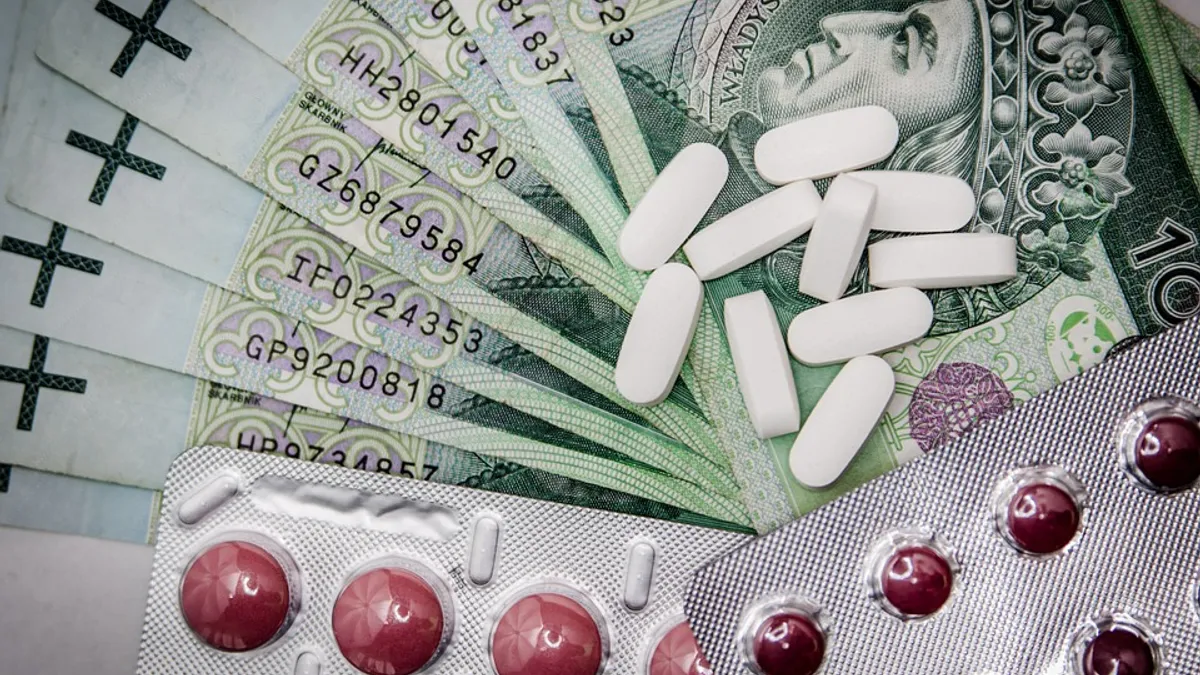Dive Brief:
- The growing shift from reactive to preventive healthcare could rapidly decelerate health spending over the next two decades, according to a new report from Deloitte, running counter to much more dire predictions made before COVID-19.
- Previous CMS analyses estimate health spending will grow by 5.3% per year through 2028, which — if extrapolated out — means health spend will snowball to about a fourth of the gross domestic product by 2040. But Deloitte's predictive modeling based on the rise of digital health products and more consumer engagement in their health post-pandemic instead predicts health spending will reach $8.3 trillion by 2040, making up a much-lower 18.4% of the GDP.
- That's a difference of $3.5 trillion freed up that can be reinvested back in patient care, infrastructure or other needs, the consultancy said.
Dive Insight:
In 2019, U.S. health spending reached $3.8 trillion, almost 18% of the GDP, according to CMS. Prior to the coronavirus pandemic, the agency forecast health spending would reach almost $6.2 trillion by 2028, a sharp increase which, if the rate of change holds, means U.S. health spending could reach a whopping $11.8 trillion by 2040.
That's 26.1% of the entire GDP.
But that estimate aired before COVID-19. The pandemic, which has killed more than 460,000 people in the U.S. to date, has exposed numerous flaws in the healthcare system, well known for its focus on treatment of existing diseases rather than prevention.
However, some experts believe COVID-19 could be good for the healthcare system in the long run by showing the necessity of proactive care and driving the adoption of health tech, among other changes
Roughly 80% of health spending in 2019 went toward treatment. But by 2040, Deloitte projects 60% of spending will shift toward wellness maintenance and preventive care instead, as companies invest in data to generate predictive health insights and tools nudging consumers to take best actions for their health.
Adoption of such tools has already exponentially accelerated due to COVID-19, but the growing emphasis on preventive care means startups and existing players alike will begin hyper-focusing on early engagement with consumers and using sensors to continuously monitor health, Deloitte said. Additionally, the rise of retail clinics, inexpensive urgent care facilities and virtual care means it's easier for patients to meet with providers, significantly reducing traditional barriers to access like cost and physical distance.
These shifts would lead to less waste in the system, which previous research suggests makes up a fourth of all health spend.
Deloitte's models show spending in these wellness areas will eclipse treatment-related spend by 2033. By 2040, the consultancy predicts spending on wellness to make up 11.3% of the GDP, with spending on treatment and diagnostics to make up the remaining 7.1%.
By that time, the health system could look radically different. The industry could see a sea change in how healthcare is financed, along with the end of traditional care settings like the general hospital and a slowdown in mass-produced biopharmaceutical products, Deloitte predicts.
Standalone hospitals have suffered, long before COVID-19, from shrinking volume due to the rise of home- and community-based care, a trend exacerbated by the pandemic. That's likely to accelerate in the next few decades, with patients needing care increasingly receiving it in highly specialized settings outside of the acute care hospital, researchers predicted.
Similarly, as more health data is collected, biopharma companies will be able to produce more tailored therapies for individual patients by analyzing their unique needs and conditions in new ways. COVID-19 forced researchers to more heavily rely on digital technology for clinical trails, and that growing reliance, along with streamlined regulatory processes, resulted in diagnostic tests, therapies and multiple vaccines hitting the market at a record clip. In the next 20 years, that pace could continue or even exponentially accelerate, Deloitte said.
And, as the adoption of technology and devices increases, industry could also see a change in how healthcare is paid for. Diseases could be detected sooner and treated (or prevented altogether) before they become more severe. If this lowering level of health risk occurs, consumers could seek out more targeted insurance plans, as opposed to the sweeping coverage designed as an umbrella for broad populations that exists today, researchers found.
Deloitte researchers analyzed National Healthcare Expenditure Accounts data along with other spending and current trends to model potential shifts in the health landscape, including the effects of rising data sharing and interoperability, the push for equitable health access, consumerism and behavior change and the rising pace of scientific breakthroughs.












